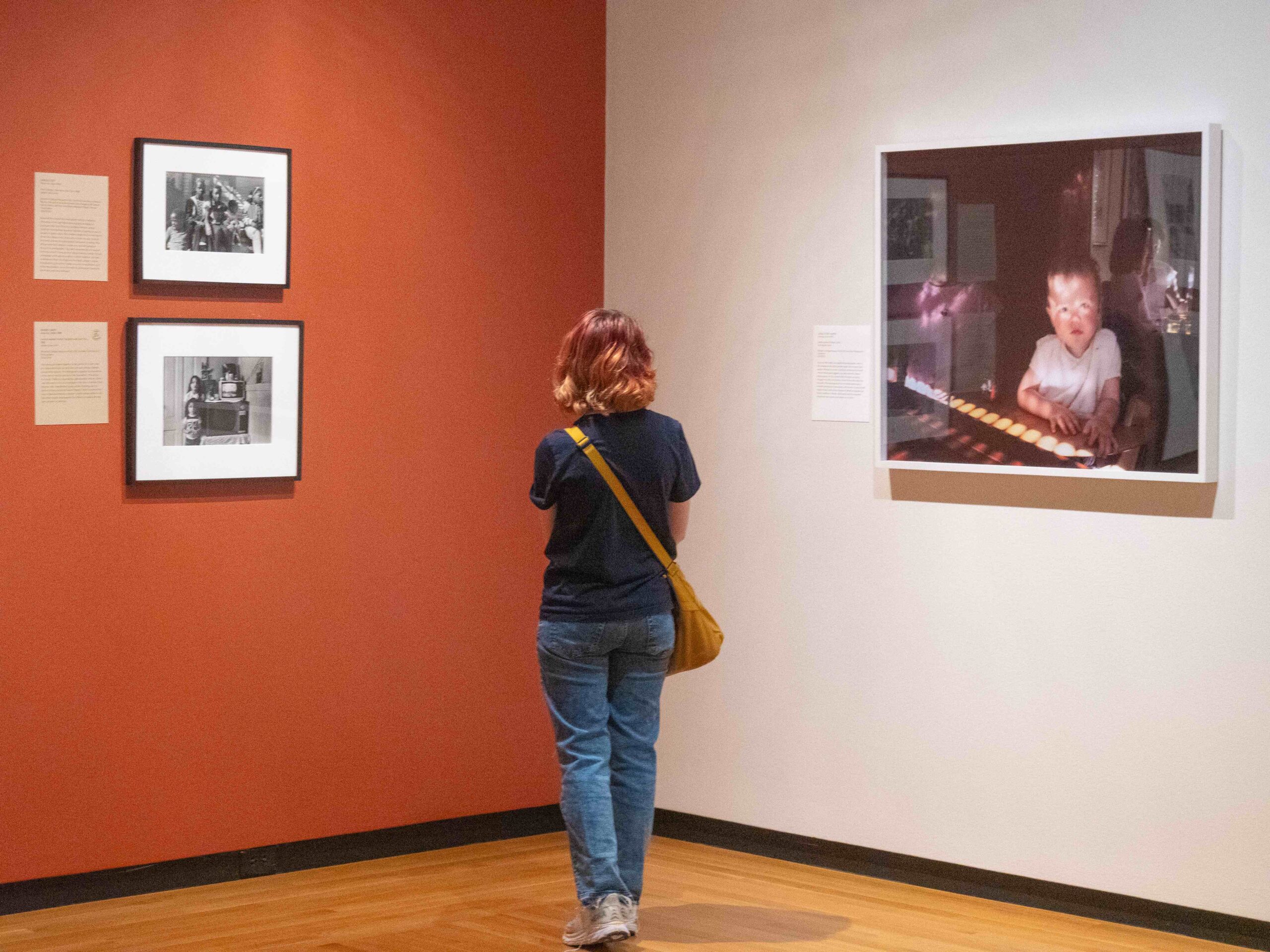BCMA examines ethics of people-watching in contemporary photography exhibition
September 1, 2023
 Alex Spear
Alex SpearA new exhibition at the Bowdoin College Museum of Art (BCMA), “People Watching: Contemporary Photography Since 1965,” explores the human habit of observing other people through a collection of over 120 photographs from nearly 50 photographers.
The exhibition begins with two photographs, taken in 1991 and 1992 by Native American photographer Zig Jackson for a series entitled “Indian Photographing Tourist Photographing Indian.”
Frank Goodyear, co-director of the BCMA, said the curators placed the photos at the beginning of the exhibit to frame the moral questions surrounding people-watching and photographing people.
“We placed these photos right here at the outset because we want to call attention to the idea that photographing people is not an innocent act, that it’s fraught with power relations,” Goodyear said. He added that photography has historically been used to marginalize and exoticize various peoples, and that Jackson’s work reveals the damage tourists’ cameras have done to Indigenous communities.
Another section of the exhibit, entitled “On the Street,” shows street photographs of people in New York City in the 1960s. The public setting of the photos suggests that many of the subjects are unaware that they’re being photographed, Goodyear explained.
“What is the implication of photographing a stranger on the street?” Goodyear said. “There is, I think, a challenge to making photographs in public spaces that allow us all to have kind of a voice or agency in this moment of exchange.”
The exhibition also shows photos taken by Professor of Art Michael Kolster. He took photos of his wife, Christine, and his son, Calvin, at the height of the pandemic and as Calvin was growing and getting taller.
“The work that’s included in the museum comes from a moment where I thought it was actually really important to photograph [Calvin] in more depth, or at least more concertedly,” Kolster said.
He went on to explain the significance of Calvin’s physical growth.
“It’s important for people to understand that Calvin is severely disabled … and so he has always been kind of smaller to begin with,” Kolster said. “And so for me to say that he’s taller means that he’s five feet instead of four and a half feet. So for a 16-year-old, he still seems smaller than your average 16-year-old, and he can’t talk, or at least he doesn’t really have what we can understand to be expressive communication.”
Kolster said that Calvin’s disabilities make it difficult for him to photograph his son.
“I often want to photograph him in a certain way, but he doesn’t understand what it means to hold still or to collaborate in the making of the pictures,” Kolster said. “And so that’s one thing that I think is very interesting to me as a sort of larger question around photographing: Is it a portrait if the person being photographed doesn’t have awareness of the collaboration or of them being photographed?”
The exhibition draws entirely from artworks that belong to the museum’s permanent collection, with exception of the photos taken by Kolster.
“I think it’s important to underscore that it’s a show that comes almost exclusively from the museum’s collection,” Kolster said. “This represents a fraction, actually, of the photographic collection, but it shows that the collection of the college’s museum is first rate.”

Comments
Before submitting a comment, please review our comment policy. Some key points from the policy: